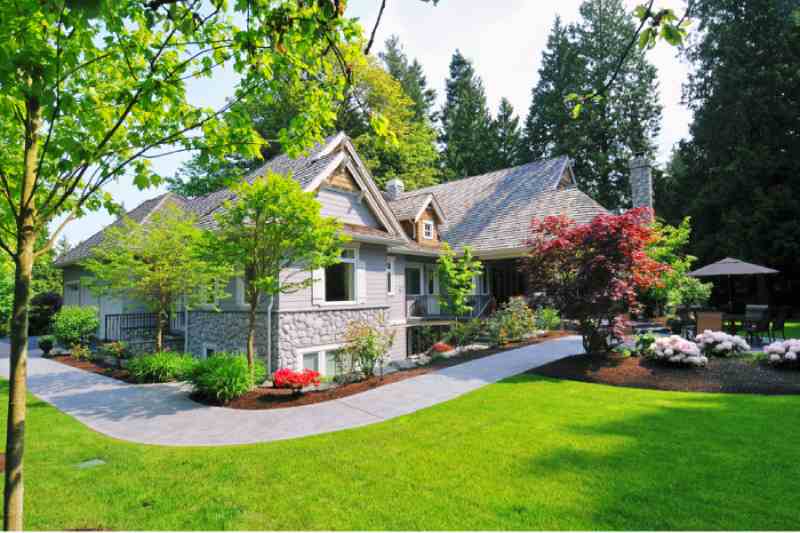
Landscaping is a great way to enhance the beauty of your residential or commercial property. However, creating an aesthetically pleasing landscape is not an easy task. It requires extensive planning, designing, and implementation to achieve the desired results. The last thing you want is to make a plan only to realize that it won’t work with the types of trees and shrubs that are to be installed. That’s why it’s essential to partner with arborists for successful landscape remodeling and installation. By starting off with a strong partnership, you will avoid having to rework plans later on. In this blog, we’ll explore the concerns that an arborist addresses during the landscape remodeling and installation process.
Why Landscape Remodelers Bring in an Arborist
When it comes to landscaping, specialized skills and expertise are required. Landscape remodelers come up with an idea and a design to create an ideal landscape, while arborists come in to address the health and growth of trees on the property. Tree growth and health are vital aspects of landscaping, and as such, arborists play a crucial role in the process. From the selection process to planting and ongoing maintenance, our certified arborists can assist with every step of the process.
Selection
1) Plant Selection
One of the biggest concerns that arborists can help to address during the landscape remodeling process is plant selection. Arborists can help to determine which plants are best suited to a particular space. They consider a variety of factors, including the function of the space, the desired appearance, and the climate. Arborists will also be able to choose native plants that are suited to the area, which means less maintenance and problems.
2) Selection of healthy nursery stock
In addition, arborists can help to ensure that only healthy nursery stock is selected, avoiding trees with girdling roots, diseases, or insect infestations, and those with poor branch structure. They can also help identify the best type of tree for the specific situation, taking into account factors such as bare root vs. balled-and-burlapped vs. container-grown.
3) Selection of an appropriate planting site
Furthermore, arborists can also assist with choosing an appropriate planting site. This involves considering the size of the tree or shrub when mature, as well as anticipating any potential complications. For example, if a tree is susceptible to insects that produce honeydew, it should not be planted over driveways or outdoor entertainment areas.
4) Consider Viability
Finally, arborists help to ensure the viability of the plants that are being selected and planted. This includes considering factors such as drainage, soil type, and nearby species. Arborists are familiar with allelopathic species, as well as species that share pathogens. For example, an arborist would know not to plant a cedar tree near a crabapple, as they will likely both get cedar-apple rust.
Proper Planting
Proper planting can be the difference between a healthy thriving tree, and a stunted feeble tree. It involves not planting too deeply or too shallowly, and not over-mulching. Correct timing for planting can depend on other factors such as the type of plant and the climate. However, the dormant season is typically the best time to plant trees and shrubs when the ground is softer. An arborist can ensure that planting is done correctly so the plants can establish strong roots and thrive in their new environment.
Maintenance After Plants are Installed
After the plants are installed, an arborist can help with the maintenance of the landscape. A Canopy Protection Program can be implemented to monitor for common insects and diseases, as young plants are more susceptible. They can monitor for transplant shock, drought stress, and other stressors. This ensures the investment in the new landscape is protected. Structural pruning in the first few years can establish a good branch structure and eliminate codominant stems. An arborist can also provide maintenance services such as fertilization and watering to ensure that the plants remain healthy and thriving.
How to Choose the Right Arborist for Your Landscaping Project
Choosing the right arborist for your project is crucial to the success of your landscape design. When choosing an arborist, make sure to check their credentials and experience. Look for an arborist with certification from organizations such as the International Society of Arboriculture (ISA) or the Tree Care Industry Association (TCIA). Word-of-mouth referrals from other landscapers or contractors can also help find a reputable arborist.
RTEC’s Partnership with Landscaping Professionals
An arborist can provide a range of benefits and services to landscapers, from proper planting to maintenance and monitoring services. By bringing in an arborist, you can ensure that your investment is protected and that the plants in your landscape design thrive. Choosing the right arborist is crucial to the success of your project. RTEC’s partnership with landscaping professionals can provide the expertise and service needed to take your projects to the next level.
At RTEC, we understand the importance of partnering with landscaping professionals to ensure the success of landscape remodeling and installation projects. We offer a range of services including tree and shrub care, plant health care, and insect and disease monitoring, among others, to help your projects thrive. Our team of qualified arborists and technicians can work with you to create a customized plan to meet your specific needs. Contact us today to see how we can partner on your next project.


